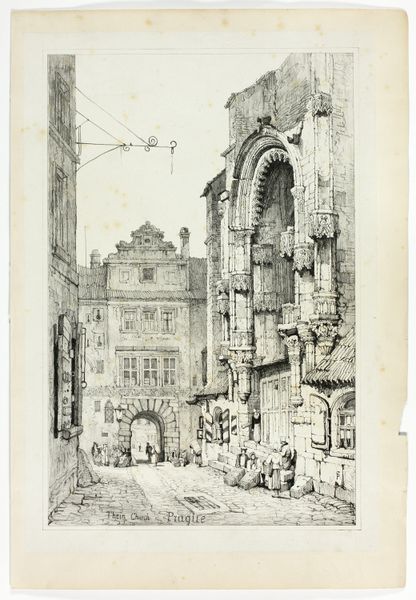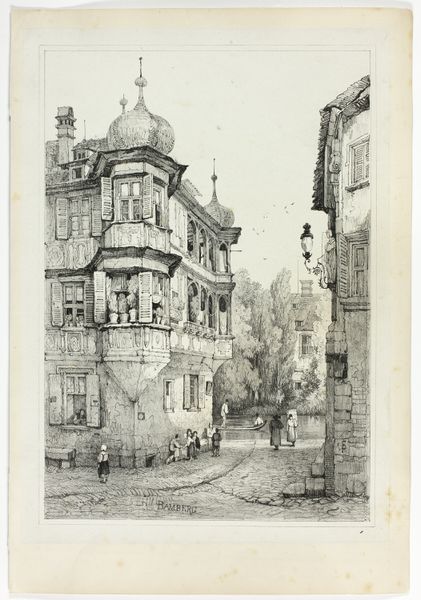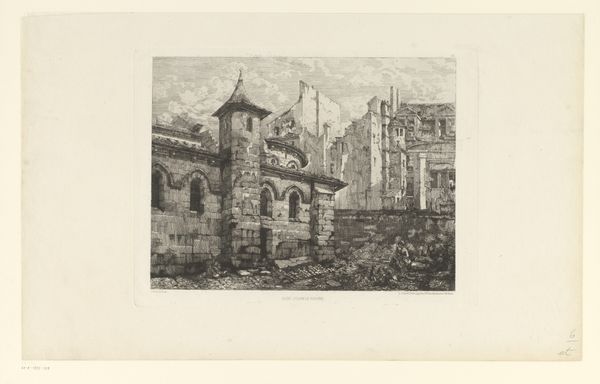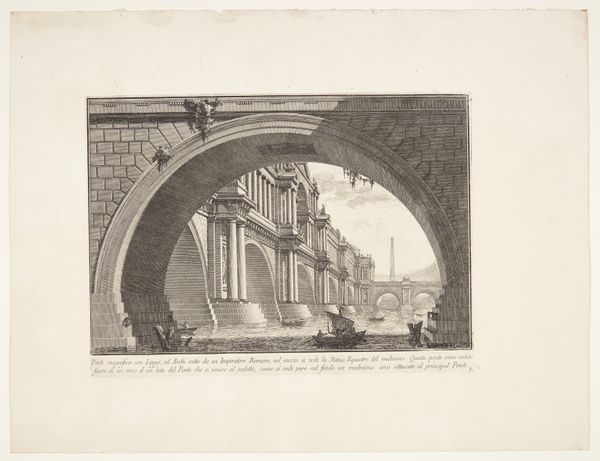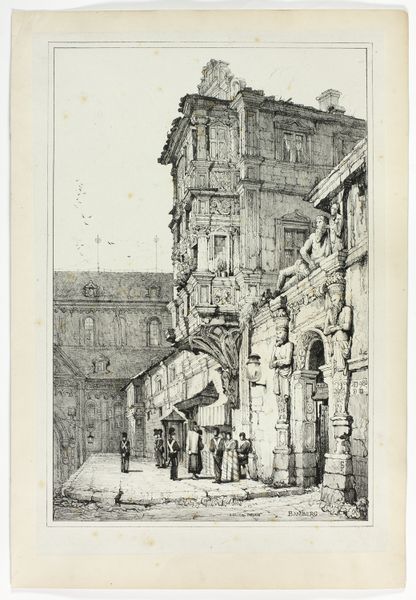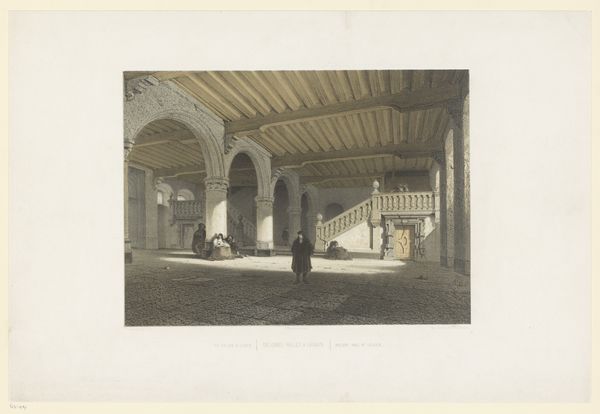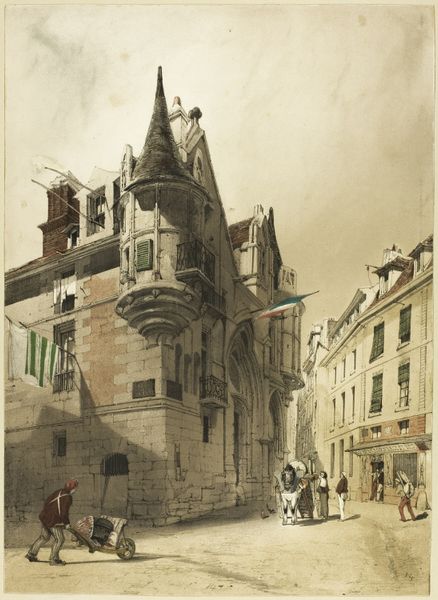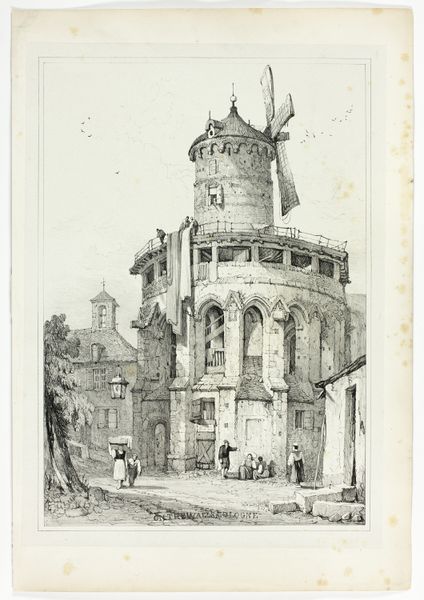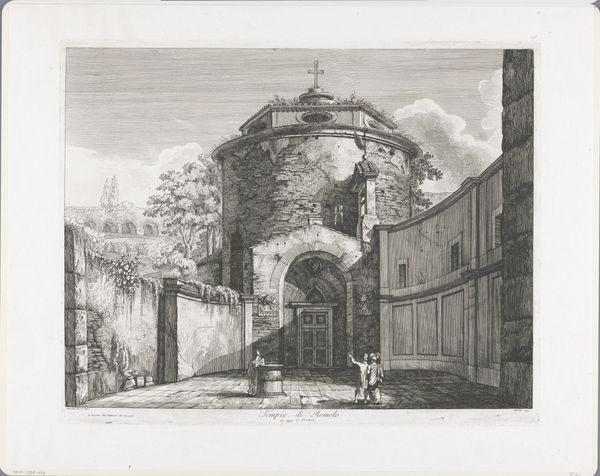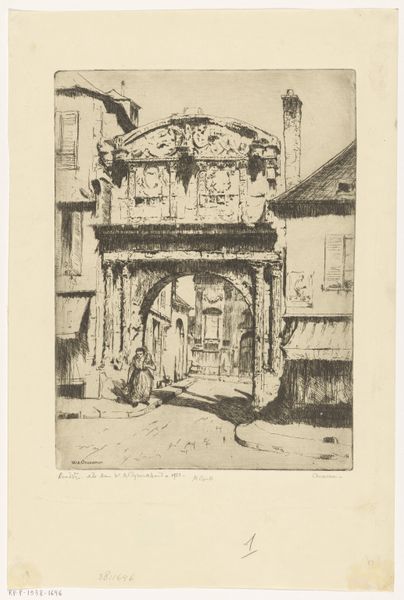
drawing, mixed-media, lithograph, painting, print, paper, watercolor
#
drawing
#
mixed-media
#
water colours
#
lithograph
#
painting
# print
#
paper
#
watercolor
#
romanticism
#
cityscape
#
mixed medium
#
mixed media
Dimensions: 11 × 14 inches
Copyright: Public Domain
Curator: Here we have Thomas Shotter Boys's "Hotel Cluny, Paris," created around 1839. It is a mixed-media piece employing drawing, lithograph, watercolor and gouache on paper, currently residing here at the Art Institute of Chicago. Editor: My first impression is one of luminous decay. There’s a beautiful, crumbling grandeur here, an interplay of light and shadow across the aging stonework. The muted colors lend it an almost sepia-toned nostalgia. Curator: It's interesting to consider Boys’s printmaking background. Notice how the architectural detail, especially in the ornate gate and the sharp angles of the building, might stem from his experience with the lithographic process, where precision and replication were key. Editor: Absolutely. And how the use of watercolor softens that inherent graphic precision. See how the delicate washes of color around the figures create depth, pushing them into the foreground? The texture of the stone, rendered with subtle gradations, emphasizes its materiality, its weight. Curator: I'm also drawn to how this image situates itself within the Romantic movement. While seemingly a straightforward depiction of a Parisian hotel, it quietly celebrates a medieval past in the face of rapid industrialization and the reshaping of Paris. What was the significance of portraying this place amidst these significant societal changes? Editor: Precisely. The figures inhabiting the courtyard offer a fascinating contrast, their lives intertwined with this monument to a different era. Look at their clothing; their labor as vendors…It really anchors the scene, doesn’t it? Curator: It certainly does. Boys is subtly capturing not just a building, but the interwoven threads of society, labor, and heritage. It's an image embedded in process, reflecting consumption through the artistic work of a period so keen on re-invention. Editor: In essence, Boys uses formal composition to communicate larger contextual meanings and questions regarding time and space that create meaning beyond just a building facade. Curator: Thank you. Exploring “Hotel Cluny, Paris” has illuminated, for me, the rich interplay between technique, context, and enduring questions about labor during times of modernization. Editor: For me, the real joy lies in discerning the emotional architecture that lives beneath the stone, evoked through subtle formal cues.
Comments
No comments
Be the first to comment and join the conversation on the ultimate creative platform.
